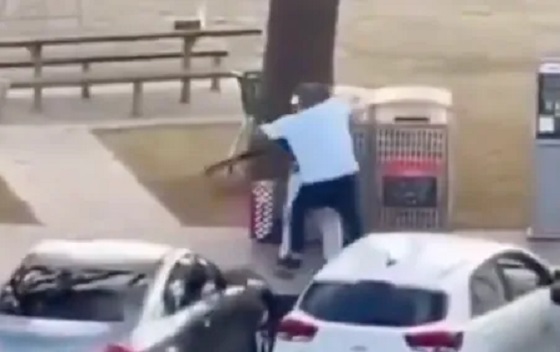Alberta
Albertans encouraged to wear cloth masks in public: easy tips and links on “How To” make your own

It is not the law, but Canada and Alberta have agreed with the idea that wearing a homemade cloth mask might help in the spreading the coronavirus, especially when it is hard to maintain the 2-metre physical distancing when in public.

Remember that the medical grade masks are for front-line care workers, medical staff and first responders. Photo/CANADIAN PRESS
Unlike many Asian countries where a lot of the population regularly wear masks in public, in Western counties wearing a mask in public is not as easily accepted by the majority of the population. One unproven theory is that images of the face masks, conjure up ideas of the bad guys, bank robbers, the wild west’s banditos all wear cloth face covers.
![]() Not pulling any punches, virologist and immunologist, George Gao told ScienceMagazine.org, “The big mistake in the U.S. and Europe – is that people aren’t wearing masks.”
Not pulling any punches, virologist and immunologist, George Gao told ScienceMagazine.org, “The big mistake in the U.S. and Europe – is that people aren’t wearing masks.”

George Gao
Gao is the director-general of the Chinese Center for Disease Control and Prevention, “This virus is transmitted by droplets and close contact. You’ve got to wear a mask, because when you speak, there are always droplets coming out of your mouth – masks, can prevent droplets that carry the virus from escaping and infecting others.” Across Asian countries the populations are onboard that, “there are an unknown number of people that are asystematic, carrying the coronavirus and they do not even know it.” So, in the spirit of a country’s solidarity, “there is a need to protect others from yourself.”
In recent weeks countries have seen the stats and cannot ignore the lower numbers of infected in mask wearing countries like, South Korea, Taiwan, Japan, Singapore, the region of Hong Kong and China has also now flatted the curve and have loosed up on the city military lockdowns.
Recently passing laws that make it mandatory to wear a face mask in public are the Czech, Slovakia, Indonesia and the Philippines. On April 3rd, US President Donald Trump, announced that the Centers for Disease Control and Prevention (CDC) is recommending, on a voluntary basis, that Americans wear “non-medical cloth” face coverings.
In Canada Chief public health officer Dr. Theresa Tam has changed her view and is now saying, “Wearing a non-medical mask, even if you have no symptoms, is an additional measure that you can take to protect others around you in situations where physical distancing is difficult to maintain, such as in public transit or maybe in the grocery store.”
In Alberta, the view has also changed on the general public wearing mask in public. Leading off with the premier Kenney, who has seen countries that have been successful in keeping the transmission of COVID-19 down, have all had widespread use of facemasks. Alberta’s Chief Medical Officer of Health, Dr. Deena Hinshaw said at a press conference, “What we know is that people who are sick spread illness – wearing a non-medical mask, such as a homemade cloth mask, has not been proven to protect the person who is wearing it,” but added, “However, it may be helpful in protecting others around you.”
The Alberta government wants people to follow these rules, even when wearing face coverings in public.
- Continue to follow all other public health guidance (staying two metres away from others, wash hands regularly, stay home when sick).
- Avoid touching your face and mask while using it.
- Wash hands before putting on a mask, then before and after removing it.
- Clean a cloth mask as soon as it gets damp or soiled.
- Put it directly in the washing machine or a sealed bag that can be emptied into the washing machine and then be disposed of.
- Cloth masks can be laundered with other items using a hot cycle, then dried in the dryer at the highest temperature setting.
- Medical masks can’t be washed and should be discarded and replaced as soon as they get damp, soiled or crumpled.
- Dispose of these masks in a lined garbage bin.
- Do not share masks with others.
There are many online resources where you can easily make a cloth mask with or without a sewing machine.
- CDC has a page with easy instructions; https://www.cdc.gov/coronavirus/2019-ncov/prevent-getting-sick/diy-cloth-face-coverings.html
- Japanese Creations on YouTube has two great “How To” videos. One has 1.5+ million views already. The second one has good tips to help glasses from fogging up, using some tin foil and a piece of tissue. Both without the need for a sewing machine. https://www.youtube.com/channel/UCyxl_I7lKw-bjUz3ECa_jwg
- Youtuber Danysska from the Czech republic has a very easy how to do instructions on how to make a cloth mask with no sewing; https://www.youtube.com/watch?v=LMwkTLGONOg
- The Surgeon General for the US, Dr. Jerome Adam has an easy to follow “how-to” video on how to make a face mask, with-out a sewing machine.
- With over 1.7+ million views, HomeMadeOnOurHomestead, has a good how to sew a reusable face mask with a filter pocket; https://www.youtube.com/watch?v=zm_NmpdgWWA
- Thoughtful Creativity 1.5+ million views on her tutorial on how to make cloth face masks in a batches using a sewing machine. https://www.youtube.com/watch?v=FW1TCQDN4do
- Kim’s Kitchen Affair has over 1.4+ million views on her DIY on how to sew a reusable pleated face mask with nose bridge and Filter Pockets in just 5 Minutes. https://www.youtube.com/watch?v=9K4dH3-LHLQ
- From prixprix on com by step with photo instructions on a, No-Sew T-shirt Face Mask www.instructables.com/id/No-Sew-T-shirt-Face-Mask/
Click here to read more on Todayville Edmonton.
Alberta
Danielle Smith slams Skate Canada for stopping events in Alberta over ban on men in women’s sports

From LifeSiteNews
The Alberta premier has denounced Skate Canada as ‘disgraceful’ for refusing to host events in the province because of a ban on ‘transgender’ men in women’s sports.
Alberta Premier Danielle Smith has demanded an apology after Skate Canada refused to continue holding events in Alberta.
In a December 16 post on X, Smith denounced Skate Canada’s recent decision to stop holding competitions in Alberta due to a provincial law keeping gender-confused men from competing in women’s sports.
“Women and girls have the right to play competitive sports in a safe and fair environment against other biological females,” Smith declared. “This view is held by a vast majority of Albertans and Canadians. It is also common sense and common decency.”
Women and girls have the right to play competitive sports in a safe and fair environment against other biological females.
This view is held by a vast majority of Albertans and Canadians. It is also common sense and common decency.
Skate Canada‘s refusal to hold events in… pic.twitter.com/n4vbkTx6B0
— Danielle Smith (@ABDanielleSmith) December 16, 2025
“Skate Canada‘s refusal to hold events in Alberta because we choose to protect women and girls in sport is disgraceful,” she declared.
“We expect they will apologize and adjust their policies once they realize they are not only compromising the fairness and safety of their athletes, but are also offside with the international community, including the International Olympic Committee, which is moving in the same direction as Alberta,” Smith continued.
Earlier this week, Skate Canada announced their decision in a statement to CBC News, saying, “Following a careful assessment of Alberta’s Fairness and Safety in Sport Act, Skate Canada has determined that we are unable to host events in the province while maintaining our national standards for safe and inclusive sport.”
Under Alberta’s Fairness and Safety in Sport Act, passed last December, biological men who claim to be women are prevented from competing in women’s sports.
Notably, Skate Canada’s statement failed to address safety and fairness concerns for women who are forced to compete against stronger, and sometimes violent, male competitors who claim to be women.
Under their 2023 policy, Skate Canada states “skaters in domestic events sanctioned by Skate Canada who identify as trans are able to participate in the gender category in which they identify.”
While Skate Canada maintains that gender-confused men should compete against women, the International Olympic Committee is reportedly moving to ban gender-confused men from women’s Olympic sports.
The move comes after studies have repeatedly revealed what almost everyone already knew was true, namely that males have a considerable innate advantage over women in athletics.
Indeed, a recent study published in Sports Medicine found that a year of “transgender” hormone drugs results in “very modest changes” in the inherent strength advantages of men.
Additionally, male athletes competing in women’s sports are known to be violent, especially toward female athletes who oppose their dominance in women’s sports.
Last August, Albertan male powerlifter “Anne” Andres was suspended for six months after a slew of death threats and harassments against his female competitors.
In February, Andres ranted about why men should be able to compete in women’s competitions, calling for “the Ontario lifter” who opposes this, apparently referring to powerlifter April Hutchinson, to “die painfully.”
Interestingly, while Andres was suspended for six months for issuing death threats, Hutchinson was suspended for two years after publicly condemning him for stealing victories from women and then mocking his female competitors on social media. Her suspension was later reduced to a year.
Alberta
Alberta’s huge oil sands reserves dwarf U.S. shale

From the Canadian Energy Centre
By Will Gibson
Oil sands could maintain current production rates for more than 140 years
Investor interest in Canadian oil producers, primarily in the Alberta oil sands, has picked up, and not only because of expanded export capacity from the Trans Mountain pipeline.
Enverus Intelligence Research says the real draw — and a major factor behind oil sands equities outperforming U.S. peers by about 40 per cent since January 2024 — is the resource Trans Mountain helps unlock.
Alberta’s oil sands contain 167 billion barrels of reserves, nearly four times the volume in the United States.
Today’s oil sands operators hold more than twice the available high-quality resources compared to U.S. shale producers, Enverus reports.
“It’s a huge number — 167 billion barrels — when Alberta only produces about three million barrels a day right now,” said Mike Verney, executive vice-president at McDaniel & Associates, which earlier this year updated the province’s oil and gas reserves on behalf of the Alberta Energy Regulator.
Already fourth in the world, the assessment found Alberta’s oil reserves increased by seven billion barrels.
Verney said the rise in reserves despite record production is in part a result of improved processes and technology.
“Oil sands companies can produce for decades at the same economic threshold as they do today. That’s a great place to be,” said Michael Berger, a senior analyst with Enverus.
BMO Capital Markets estimates that Alberta’s oil sands reserves could maintain current production rates for more than 140 years.
The long-term picture looks different south of the border.
The U.S. Energy Information Administration projects that American production will peak before 2030 and enter a long period of decline.
Having a lasting stable source of supply is important as world oil demand is expected to remain strong for decades to come.
This is particularly true in Asia, the target market for oil exports off Canada’s West Coast.
The International Energy Agency (IEA) projects oil demand in the Asia-Pacific region will go from 35 million barrels per day in 2024 to 41 million barrels per day in 2050.
The growing appeal of Alberta oil in Asian markets shows up not only in expanded Trans Mountain shipments, but also in Canadian crude being “re-exported” from U.S. Gulf Coast terminals.
According to RBN Energy, Asian buyers – primarily in China – are now the main non-U.S. buyers from Trans Mountain, while India dominates purchases of re-exports from the U.S. Gulf Coast. .
BMO said the oil sands offers advantages both in steady supply and lower overall environmental impacts.
“Not only is the resulting stability ideally suited to backfill anticipated declines in world oil supply, but the long-term physical footprint may also be meaningfully lower given large-scale concentrated emissions, high water recycling rates and low well declines,” BMO analysts said.
-

 Alberta7 hours ago
Alberta7 hours agoDanielle Smith slams Skate Canada for stopping events in Alberta over ban on men in women’s sports
-

 Health24 hours ago
Health24 hours agoSaskatchewan woman approved for euthanasia urged to seek medical help in Canada rather than US
-
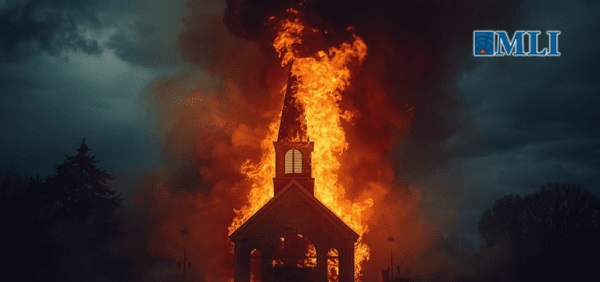
 Indigenous24 hours ago
Indigenous24 hours agoResidential school burials controversy continues to fuel wave of church arsons, new data suggests
-
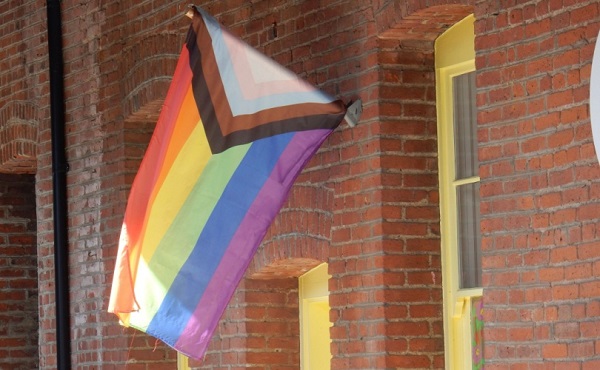
 Health1 day ago
Health1 day agoCanadian gov’t considers sharing census data on gender-confused children
-

 International23 hours ago
International23 hours agoFBI didn’t think it had cause to raid Trump but DOJ did it anyway
-
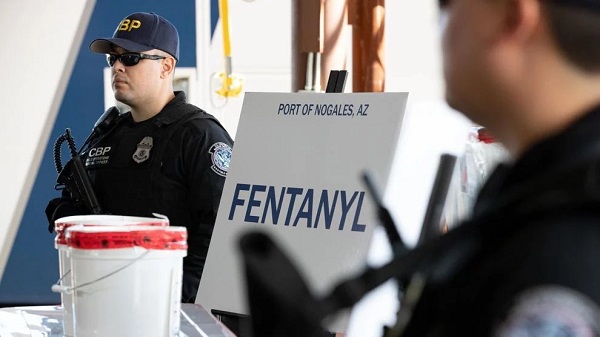
 Crime2 days ago
Crime2 days agoTrump designates fentanyl a ‘weapon of mass destruction’
-
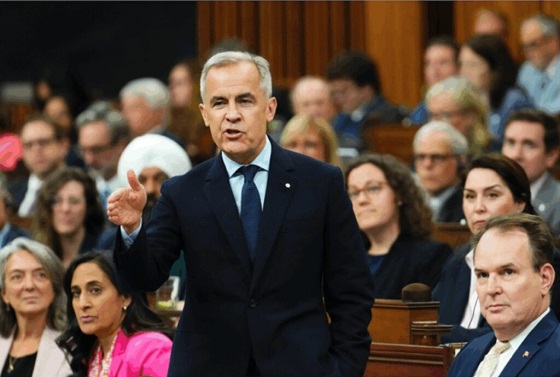
 Energy12 hours ago
Energy12 hours agoLiberals Twisted Themselves Into Pretzels Over Their Own Pipeline MOU
-

 Digital ID2 days ago
Digital ID2 days agoCanada releases new digital ID app for personal documents despite privacy concerns



